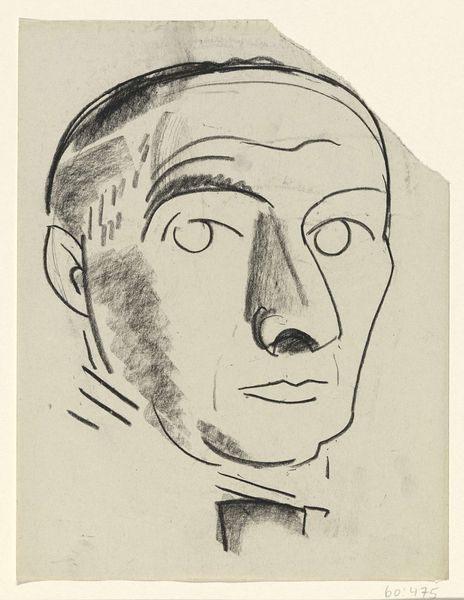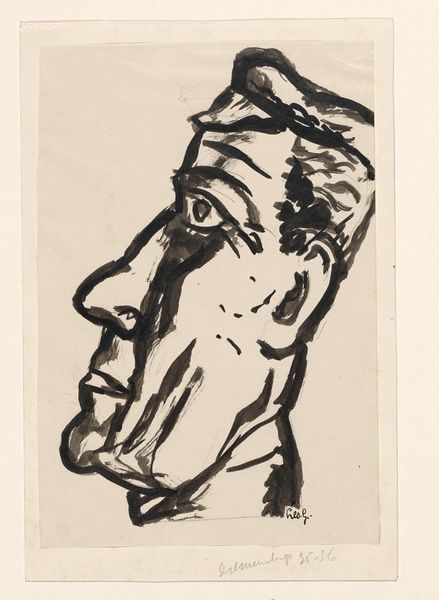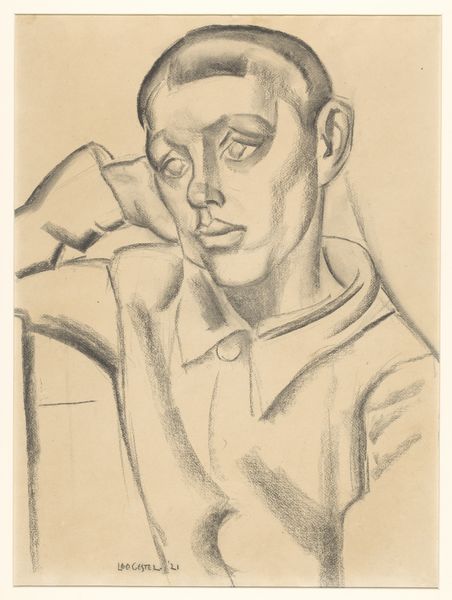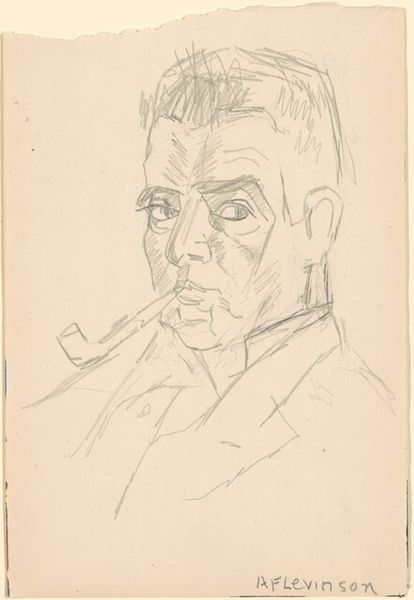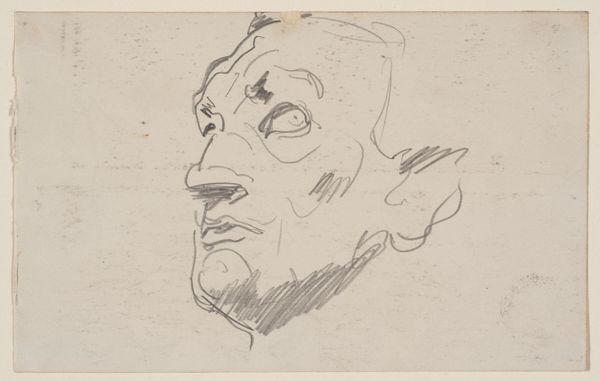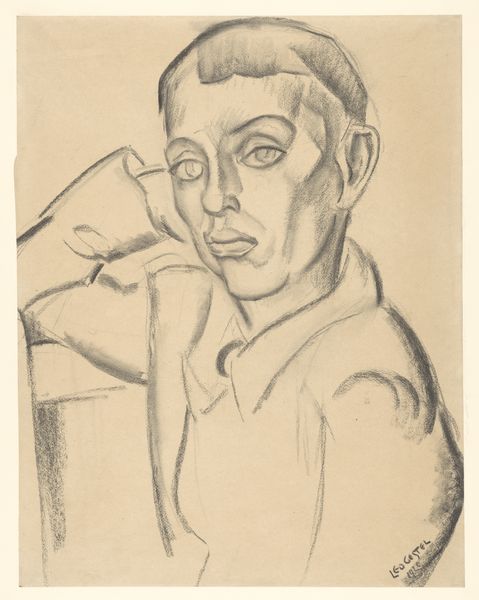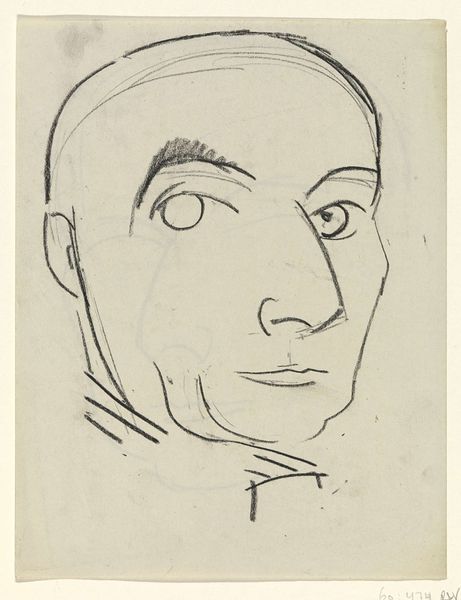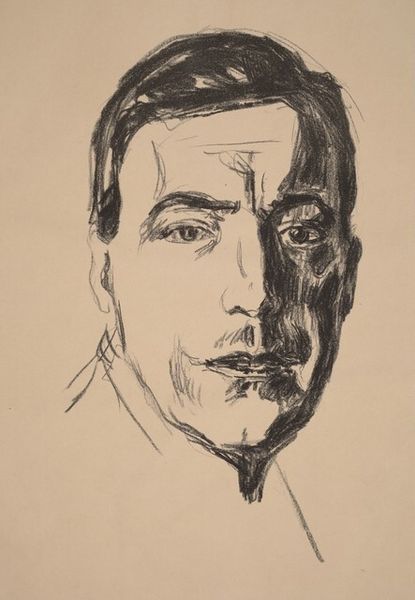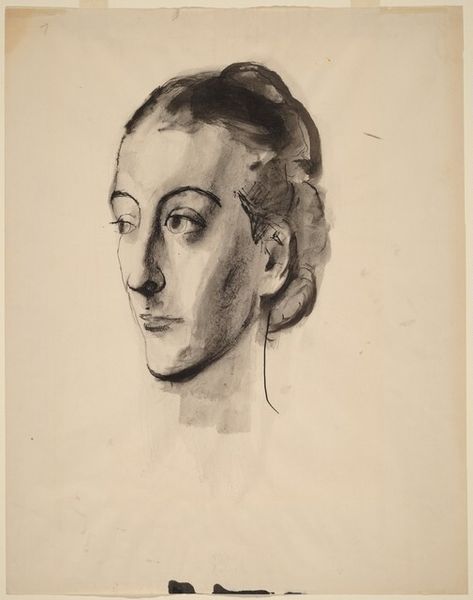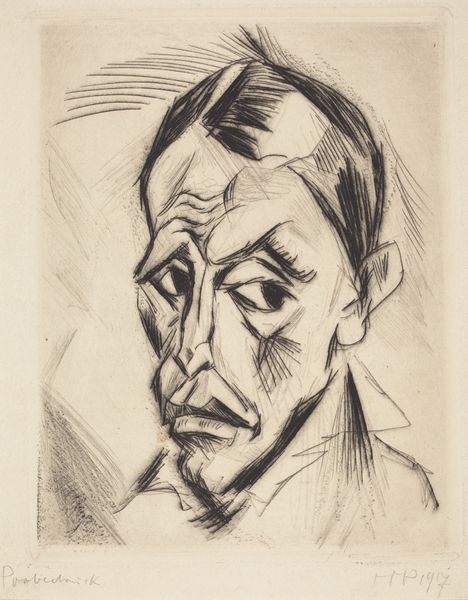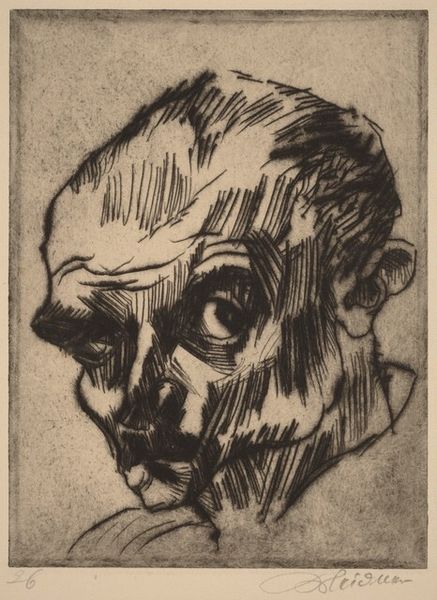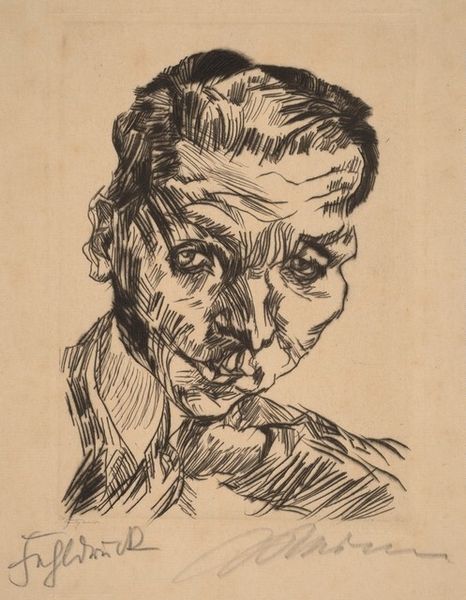
print, etching, graphite
#
portrait
#
pencil drawn
#
self-portrait
# print
#
etching
#
figuration
#
expressionism
#
graphite
Dimensions: plate: 17 × 14.2 cm (6 11/16 × 5 9/16 in.) sheet: 36.8 × 30.4 cm (14 1/2 × 11 15/16 in.)
Copyright: National Gallery of Art: CC0 1.0
Editor: We’re looking at Bernhard Kretzschmar’s "Self-Portrait" from 1924, created as a print using etching and graphite. It has a haunting quality; the lines are stark, especially around the eyes. How do you interpret this work focusing on its formal elements? Curator: The power of this portrait lies indeed in its linearity and tonality. Consider the economy of line – each stroke is deliberate, contributing to the overall structure of the face. The strategic use of darker graphite establishes deep shadows, particularly around the eyes, creating a dramatic chiaroscuro effect. Notice how the starkness is achieved without relying on color? Editor: Yes, I see it. So, the composition and line work are fundamental here. What about the surface quality – the actual texture of the print? Curator: The etched lines, thin yet firm, define the form, and create a tangible surface quality. It invites contemplation of the process itself: the artist's hand guiding the etching tool, the deliberate choices in applying graphite to manipulate light and shadow. The print itself creates a unique, reproducible surface, doesn’t it? How does it strike you? Editor: It’s fascinating how much emotional depth is conveyed with what seems like very limited means. Focusing on these core elements gives a much clearer sense of the artist's intention, and the impact they wanted to have. Curator: Precisely. Stripping away extraneous narrative allows the fundamental elements of line, tone, and composition to communicate directly with the viewer. Hopefully, the focus on form sheds a new light on the depth of Expressionism, as seen here.
Comments
No comments
Be the first to comment and join the conversation on the ultimate creative platform.
